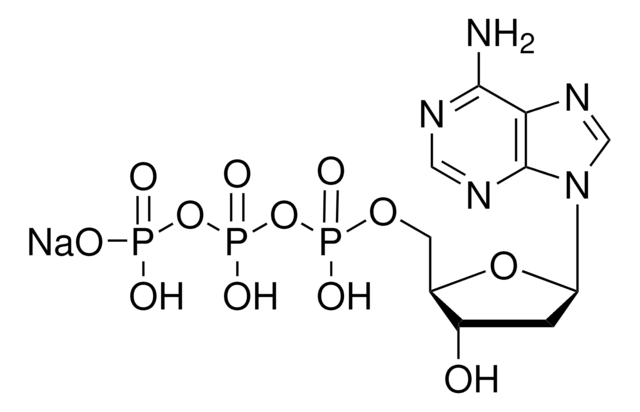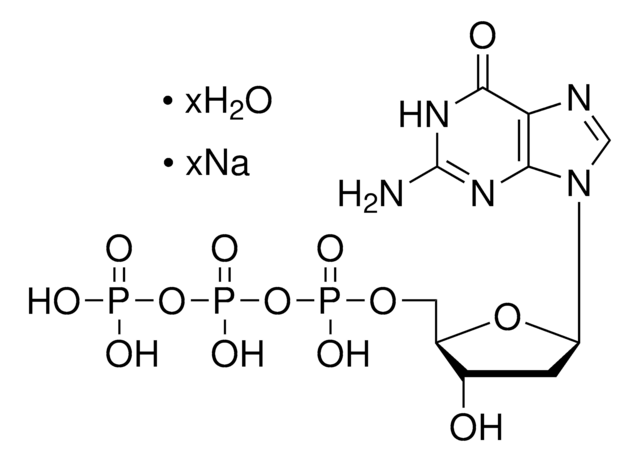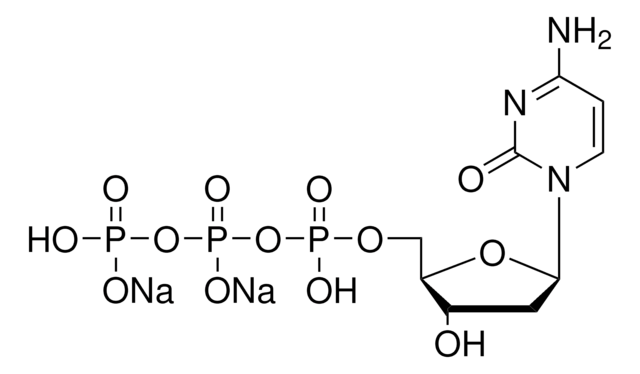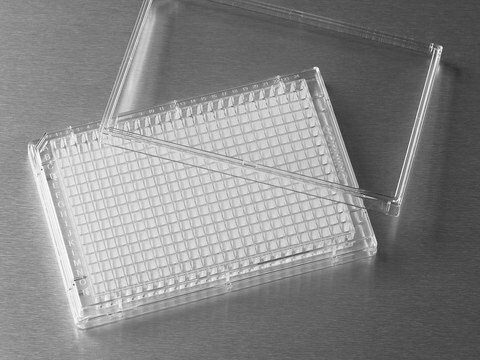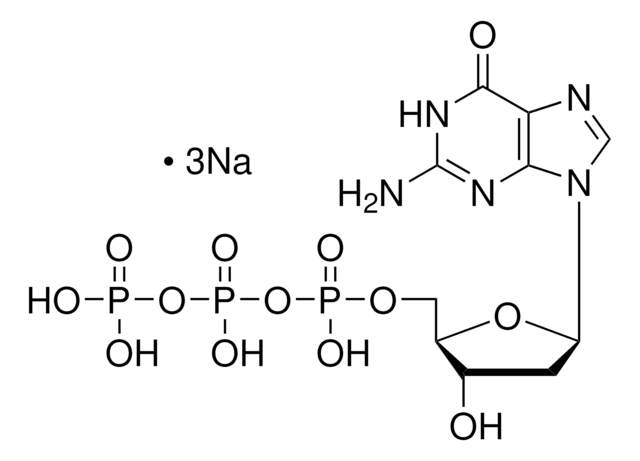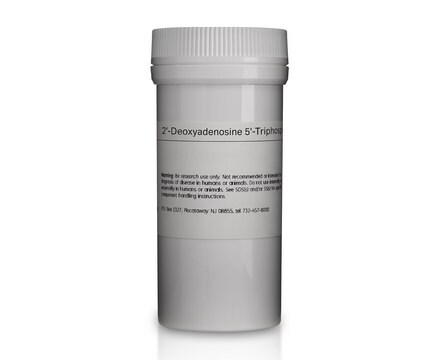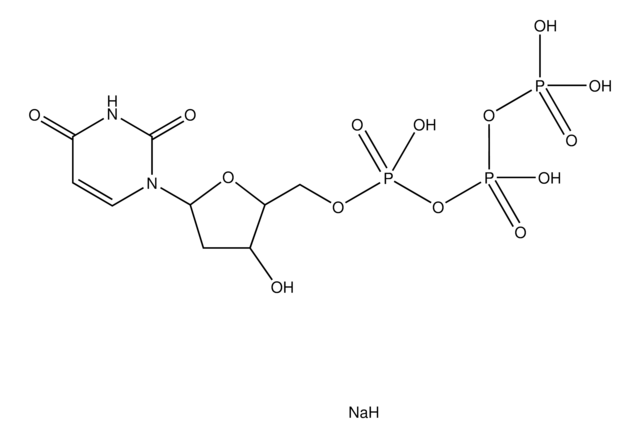DCTP-RO
Roche
2′-Desoxycytidin-5′-triphosphat Dinatriumsalz
99% (dNTP), <0.9% (dNDP), solution, 100 mM
Synonym(e):
dCTP-Na2
About This Item
Empfohlene Produkte
Beschreibung
PCR Grade, sodium salt
Qualitätsniveau
Assay
99% (dNTP)
Form
solution
Verwendung
sufficient for 125,000 standard reactions (03732690001)
sufficient for 31,250 standard reactions (11969021001)
sufficient for 6,250 standard reactions (11934520001)
Verpackung
pkg of 1,250 μL (11969021001 [100 mM])
pkg of 4 × 1,250 μL (03732690001 [4x100 mM])
pkg of 250 μL (11934520001 [100 mM])
Hersteller/Markenname
Roche
Konzentration
<0.9% (dNDP)
100 mM
Lagertemp.
−20°C
SMILES String
[Na+].[Na+].NC1=NC(=O)N(C=C1)[C@H]2C[C@H](O)[C@@H](COP(O)(=O)OP([O-])(=O)OP(O)([O-])=O)O2
InChI
1S/C9H16N3O13P3.2Na/c10-7-1-2-12(9(14)11-7)8-3-5(13)6(23-8)4-22-27(18,19)25-28(20,21)24-26(15,16)17;;/h1-2,5-6,8,13H,3-4H2,(H,18,19)(H,20,21)(H2,10,11,14)(H2,15,16,17);;/q;2*+1/p-2/t5-,6+,8+;;/m0../s1
InChIKey
ABWVCNMFYVEBIB-CDNBRZBRSA-L
Suchen Sie nach ähnlichen Produkten? Aufrufen Leitfaden zum Produktvergleich
Verwandte Kategorien
Allgemeine Beschreibung
Anwendung
Qualität
Physikalische Form
Angaben zur Herstellung
Sonstige Hinweise
Lagerklassenschlüssel
12 - Non Combustible Liquids
WGK
WGK 1
Flammpunkt (°F)
does not flash
Flammpunkt (°C)
does not flash
Analysenzertifikate (COA)
Suchen Sie nach Analysenzertifikate (COA), indem Sie die Lot-/Chargennummer des Produkts eingeben. Lot- und Chargennummern sind auf dem Produktetikett hinter den Wörtern ‘Lot’ oder ‘Batch’ (Lot oder Charge) zu finden.
Besitzen Sie dieses Produkt bereits?
In der Dokumentenbibliothek finden Sie die Dokumentation zu den Produkten, die Sie kürzlich erworben haben.
Kunden haben sich ebenfalls angesehen
Unser Team von Wissenschaftlern verfügt über Erfahrung in allen Forschungsbereichen einschließlich Life Science, Materialwissenschaften, chemischer Synthese, Chromatographie, Analytik und vielen mehr..
Setzen Sie sich mit dem technischen Dienst in Verbindung.